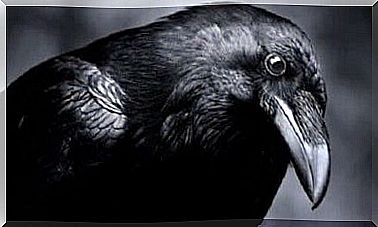Forensic Psychologist’s Report: Guidelines

The forensic psychologist’s report is a document, of a scientific and objective nature, which reports the results and conclusions of an expert opinion. It should therefore be considered as a legal document. Furthermore, it requires particular responsibility and the drafter may have to defend his or her conclusions before a court, should it be necessary.
This defense does not imply a formal defect, but is established in the framework of a trial. Below we will give an example of a forensic psychologist’s report, in order to better understand what it is.
Forensic Psychologist Report Template
1. General information
The reasons for the appraisal must be formulated by the court requesting it , in the clearest, most precise and concrete way possible. The delivery date should not be included in the report, but it is advisable to indicate the effective date because the whole procedure depends on the time available, on the person or persons subjected to the expert opinion and on the circumstances.
Eg:
PSYCHOLOGICAL EXAMINATION N ° …
Place and date of issue of the report: Milan, 9 November 2018
To the c.a …. Public Prosecutor’s Office, c / o Court of
Issued by: Psycholologist … Registered in the Register of Psychologists of the Region …
Object: To determine the condition of intellectual disability

2. User identification data
Sensitive user data must be included and this is because, in general, the report revolves around a person. And this despite the time available to process the report and the convenience of hiring other people who can offer relevant information in order to satisfy the request (reason for the report).
Consequently, it will depend on your own professional judgment and, at times, on the pure and simple logic of the case.
It should include the following data
Name and surname:
Date and place of birth:
Instruction:
Profession:
Marital status:
Street address:
Telephone number:
In this example we have the user and two other people who will be evaluated:
- Antonio Russo, aged 9
- Mrs. Maria Rossi, mother of Giuseppe Franco
- Mr. Antonio Franco, father of Giuseppe Franco
3. Methodology
Here are some of the main elements of the methodology:
3.1. Sources
- Sources are resources or means of obtaining the information necessary to develop the report. This is why they are not mentioned in the technical consultation report.
- The psychologist must manage two or more hypotheses on the case, based on the complexity of the latter. The assumptions must be based on literature, scientific evidence, similar previous reports, professional experience, etc., and are used to elaborate the methodology. They are not mentioned in the minutes.
- Examples of sources: dossier, behavioral observation, interview, psychological assessment tools, etc.
3.2. Techniques and tools
- First of all, the techniques and tools that will be used to obtain information will be described one by one and briefly . But also the usefulness of these in the course of the appraisal and the author or authors of the same. In this way the interested reader will be able to consult the sources cited.
- The open interview has no author. If the professional has elaborated a semi-structured interview for the occasion, he must consider it a “Semi-structured interview designed ad hoc “.
- The use of each tool must be duly put into practice and justified, which makes it possible to examine the criterion of the expert in choosing the most suitable tools.
4. Case history
This is a summary of the information that justifies the expertise. This point is fundamental to understand the nature of the problem, the relevance of the report and the possible results of the same.
These data come mainly from the dossier. The family history, in case of registration, will be included in the interviews, so they are part of the results.
5. Findings on the forensic psychologist’s report
The techniques and tools applied are listed, in chronological order and indicating the day and time of application. But also the duration of the session and the results obtained without interpretation, since the latter takes place in the integration of the results.
It is possible to merge the Results section and the Integration of results, describing them in this order. By Results we mean the specific and relevant information to respond to the subject of the appraisal. The results must match what is the subject of the investigation in the Tools or Assessment Protocol section. The chosen evaluation order (child, mother, father) and the application of the selected techniques and tools must be respected.
Finally, anyone who designs a technical consultation must be careful not to give character of truthfulness or effectiveness to comments or statements that have no medical, legal or administrative value or whose veracity has not been ascertained.
In these cases it is necessary to use phrases such as “according to the lady”, “according to what was reported by Mr. …”, “according to what is indicated by the document …”, “according to the words of the lady …”, “the child says …”.
6. Integration of results
It is about integrating all relevant information according to a logical sense; this will allow the psychologist to draw conclusions consistent with what has been previously stated.
In many cases the practitioner needs to use theoretical elements or scientific data for the reader to understand the interpretation of the results. If you find yourself in this position, you will need to report the relevant appointments and include the full source in the ‘References’ section.

7. Conclusions on the forensic psychologist’s report
It must contain a clear and precise answer to the questions that led to the report, recognizing the level of objectivity and scope of the information.
In any case, the ideal is that in the report each deduction is accompanied by a judgment of certainty on the inference itself, exposing the margin of error available to the professional who drafted the report.
In the conclusions of a forensic report we can also find the resources used for the expertise, since in many cases the latter are associated exactly with the margin of error we have talked about.
Some of these can be: time, logistic ease, access to the necessary professional personalities, collaboration of the users who participate in the expertise, age or mental state of the people evaluated, etc.
8. Recommendations
They are indicated only if requested by the judicial authority and included in the appraisal or if the expert considers it necessary for the authority to acquire them in the forensic report.
They are associated with treatment advice, new assessments, acquisition of additional information for a better assessment of the case, information useful for the adoption of protective measures, etc.
9. References
References are also needed in the forensic psychologist’s report. They are very important since they allow you to consult the theoretical, technical and scientific sources used by the expert to develop the report and to draft the report.
10. Documents attached to the forensic psychologist’s report
Depending on the case or the complexity of the information obtained, it is advisable to attach videos, tests, questionnaires, drawings, documents, etc. It is not common to attach evaluation material, to be presented only if the judge, notary or lawyer makes a formal request. If it is attached to the report, it will be asked to number each attachment (Attachment 1,2,3…) and explain its contents.
To summarize, in the guidelines just mentioned we have summarized the recommended sections for each forensic psychologist report. It will be necessary to evaluate the sections in which all information will go on purpose, from which data to accompany it and to what extent deductions can be made.
In the context of Forensic Psychology, the expert’s conclusions can lean towards one side of the scales. However, the final decision will always be up to the judge.








